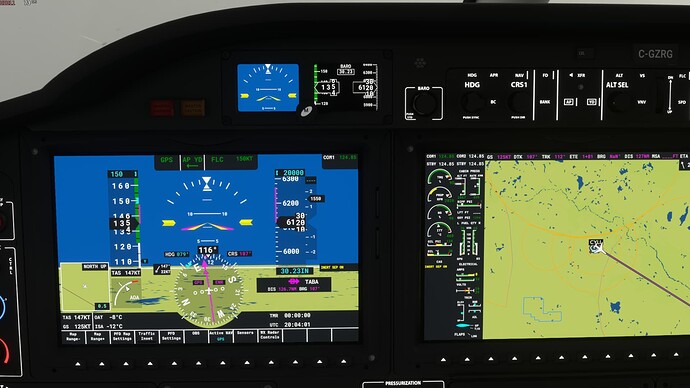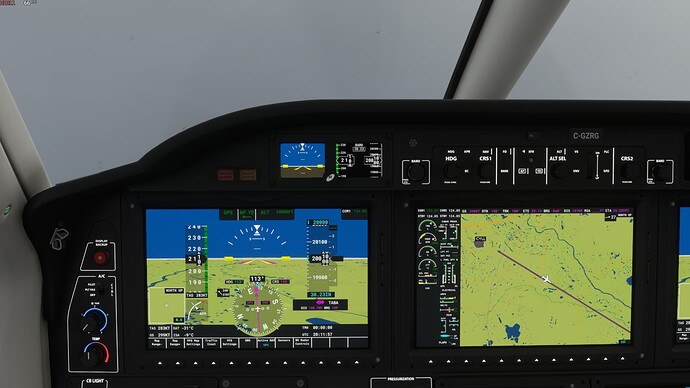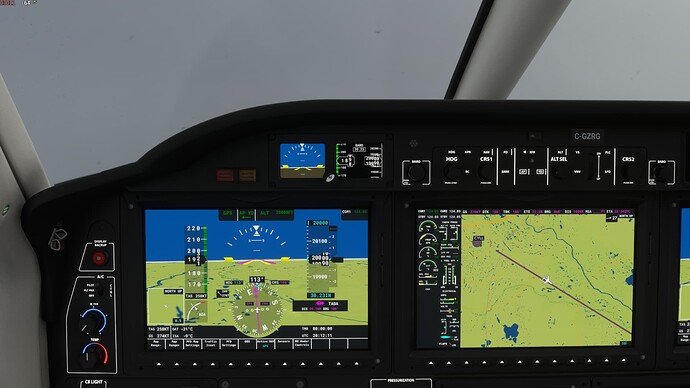Hi people, I am looking for some assistance with the Daher. If I’m flying at high speed and pull my throttle to idle, the prop RPM stays high and I have trouble slowing the aircraft down. Is this a bug or am I missing something?
How high is high?
What RPM does it drop to?
Like throttle Idle, RPM Redlining
There are no other posts in here on that, so whatever is happening it seems to be in your system.
What are you using for a controller?
this is all on XB Series X with its controller. I’ve tried using the keyboard but that doesn’t solve the issue.
Not having an Xbox, I’m not sure what you have for menus.
Can you go into the Controls Options and see if the binding for your controller has changed?
No bindings have changed. Throttle works as it should in the first few minutes of the flight then decides to do whatever it wants.
Have your Assist settings changed.
That is a known issue.
Ill take a look when im on later. Thanks for your help!!
I’m seeing this behavior on Xbox, too. I just tested this for you.
Closing the throttle all the way to idle, I even seen a small drop in RPM and then it climbs back up and then very, very, very slowly starts to come down.
Exactly! Annoying when coming in to land lol
It’s been so long since I’ve flown the TBM that I don’t even remember what its normal behavior was, but it definitely wasn’t this!
I’m not sure what normal behavior on the TBM is but on turboprops its not unusual for the RPM not to drop of much, if at all. The RPM by itself does not say anything about the thrust or drag produced, since we are talking about a constant speed propeller, the propeller governor tries to maintain the selected RPM by changing the propeller into fine pitch. This causes the propeller to windmill and cause drag.
The TBM has a constant speed propeller. It is adjusted to maintain a constant RPM regardless of the torque setting. So at high speeds as the OP says the airflow is sufficient enough to turn the propeller enough at the selected RPM and the governor controls the blade angle as power is applied to maintain that same RPM.
You’ll notice at lower speeds (more so in piston aircraft with constant speed propellers) that the propeller is at its most fine pitch and can only spin so fast at the current speed.
Here is an article explaining it more. Its for a piston aircraft but the principle is the same.
For reference:
Low Speed Low Torque Low RPM
Low Speed High Torque High RPM
High Speed High Torque High RPM
High Speed Low Torque High RPM
Course pitch is NOT flat pitch. Course means a high blade angle, fine means a low blade angle (flat). When cutting the power at low speed the blades are put on the fine pitch stop in an attempt to maintain RPM, if power if insufficient the RPM will drop regardless. When the blades are on the fine pitch stop it essentially becomes a fixed pitch propeller until back within the governing range.
Airflow (windmilling) is never really sufficient to keep the propeller spinning at the selected RPM unless in a very high (overspeed) steep descent situation maybe. During normal operation the RPM will always drop somewhat at idle power.
On modern turboprops with propeller electronic control (TBM?) the propeller enters fuel governing mode when the propeller reaches the flight idle stop. From that moment onward fuel flow is regulated to maintain propeller speed at the selected value, basically the idle fuel is adjusted. Without, the RPM will drop, on a piston more so than on a turboprop.
When on the ground and selecting power levers over the flight idle gate into beta mode the propellers remain in fuel governing mode. Where usually the power lever controls power by adjusting the fuel flow, the power lever is now directly modifying propeller blade angle. The RPM is maintained in alpha mode by adjusting blade angle and in beta mode with fuel flow. To summarize:
Alpha / propeller governing mode: power is controlled by fuel flow, RPM is maintained by adjusting blade angle.
Beta / fuel governing mode: power is controlled by directly changing the blade angle while RPM in maintained by adjusting fuel flow.
The change over between the two modes on a conventional propeller system happens upon placing the power levers over the flight idle gate, on more modern systems with electronic controllers the switch is made when the propeller reaches the fine pitch stop.
Yes the last pic is what I’m experiencing. So if I’m coming in to land and it’s like that, how do I slow the aircraft down? I’m sorry I’m still fairly new.
It’s a constant speed prop, so it should always be at the same RPM in flight. The PC12 is fixed at 1700 RPM.
RPM doesn’t define thrust, blade angle does.
My apologies, I always get them confused haha. I will go edit that post, just trying to keep the terms simple for the OP.
You’re right about the relationship between power lever angle and fuel/propeller scheduling in the different ranges. Judging by your bio you’ve got a lot of experience with turboprops. The TBM might be a bit different with its integrated power lever as compared to separate power and condition levers in a conventional turboprop.
As you can see in that picture the torque (engine power) is quite low and the speed vector (the purple bar on the airspeed indicator) is showing a rapid decrease in airspeed. You should have no trouble slowing down in this situation.
This is because torque is the power being transmitted from the engine and the propeller rpm just shows the speed at which the propeller turns. It’s hard to uncouple the thought of Np (propeller rpm) and engine power (torque) as a beginner. In a constant speed propeller they function independently, the TBM features an integrated power level that handles the function of both.
Maybe try flying the Beechcraft Baron or King Air. They both have independent power, propeller/condition and mixture levers to get a better idea of how constant speed propeller works. That article I linked earlier explains it more in detail too!
I hope that helps!



